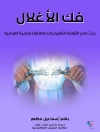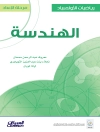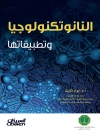Peers have always been an important influence on students’college experience. Peer leadership programs are not only pervasivebut also offer an effective means to advance students’adjustment, learning, development, and success. This issue coverspeer leadership as an emerging high-impact practice in support of21st Century Learning Outcomes. In it, you’ll learn:
* The benefits of peer leader programs
* A history of peer education
* How to provide academic support through peer education
* Peer leadership in the cocurriculum
* Integrating technology into peer leader responsibilities
* Peers in doctoral education
* The architecture of a high-impact and sustainable program.
This is the 157th volume of thid Jossey-Bass series.Addressed to higher education decision makers on all kinds ofcampuses, New Directions for Higher Education provides timely information andauthoritative advice about major issues and administrative problemsconfronting every institution.
विषयसूची
Editor’s Notes 1
Jennifer R. Keup
1. The Benefits of Peer Leader Programs: An Overview from the Literature 5
Jaime L. Shook, Jennifer R. Keup
This chapter provides a review of the literature on peerleadership with specific emphasis on the benefits of these programsto the students being served, to those who engage as peer leaders, and to the institution.
2. Where It All Began: Peer Education and Leadership in Student Services 17
Stephanie R. Ganser, Tricia L. Kennedy
The role of peer leaders in student services has evolved overtime; today, student leaders play a critical role in this aspect ofthe college experience, particularly in orientation and residencelife.
3. Providing Academic Support Through Peer Education31
Jennifer A. Latino, Catherine M. Unite
Peer educators play a variety of roles in the academic supportof other students and have significant positive effects on studentlearners.
4. Peer Leadership in the Cocurriculum: Turning Campus Activities into an Educationally Purposeful Enterprise 45
Brian M. Wooten, Joshua S. Hunt, Brian F. Le Duc, Phillip Poskus
Over the past several decades, campus activities have beentransformed into intentional learning opportunities with peerleaders playing a significant role in enhancing the studentexperience in these settings.
5. Integrating Technology into Peer Leader Responsibilities59
Melissa L. Johnson
This chapter focuses on the emerging role of technology as partof peer leader positions on college campuses and describes how peerleaders can apply technological skills to their formal and informaljob responsibilities.
6. Peers in Doctoral Education: Unrecognized Learning Partners 73
Emma M. Flores-Scott, Maresi Nerad
This chapter explores the unique, often horizontal, peereducation dynamics found in doctoral education, which are far lessunderstood than the role of undergraduate peer educators.
7. The Architecture of a High-Impact and Sustainable Peer Leader Program: A Blueprint for Success 85
Pat Esplin, Jenna Seabold, Fred Pinnegar
Building and sustaining a high-impact peer leader programrequires intentional and deliberate design from the ground up, aswell as attention to the details of training and supervision.
INDEX 101
लेखक के बारे में
Jennifer R. Keup is the director of the National Resource Center for The First-Year Experience and Students in Transition and also serves as an affiliated faculty member in the Department of Educational Leadership and Policies in the College of Education at the University of South Carolina.












